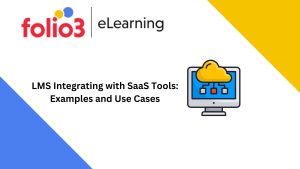
Introduction
You’ll want the software to represent your brand if you’re using it to communicate with an audience, such as staff members, clients, partners, etc. And the same should apply to your LMS. Although a white-label gateway in your LMS that you may also brand may appear to be merely ornamental, it offers your students a lot more. Let’s discuss what it takes to own a custom white-label LMS gateway, the benefits of doing so, and the methods you may brand your LMS before you give it your personal touch.
Executive Summary
With a white-label LMS, you may design training that is specifically tailored to your business’s needs. It improves the learning experience for students and strengthens your brand. Discover what, why, and how to custom white label LMS for training to suit your needs.

What Is A Custom White Label LMS?
Adding a white label to various platforms and solutions is a simple approach to expand your brand identification. A custom white-label LMS enables businesses to offer their training platform a distinctive look and feel. Rebranding any original vendor logos, colors, and other visual effects with the chosen graphics and other materials required to match the brand entails utilizing another vendor’s platform. By doing this, an LMS development company can create a customized LMS platform that appears to be entirely your own without encountering the technical difficulties that could occur when building a platform from scratch.
Why Is Custom White-Label LMS Important?
- Owning A Stamp
Your training facility should appear to be a part of your organization. You have complete control over the appearance and feel of your portal with our white-label LMS choices, starting with the most identifiable elements.
- Add your favicon and logo.
- After the portal’s color scheme.
- Make a branded site where students may sign in.
- A Constant Support
You have constant access to support for just about any issues you encounter with white-label LMSs, which is a wonderful convenience. The only thing businesses can do to avoid issues is to make sure the LMS of the choice has comprehensive, round-the-clock technical assistance. This also implies avoiding allocating funds for a highly skilled internal IT workforce is possible.
- Builds Stronger Connections
When you are the only provider of training for your audience, they will feel more like a part of your company. Also, if the platform is familiar to them, they will interact with it more freely. You can duplicate the appearance and feel of your other points of engagement through customization (internal portals, website, etc.). This can help learners feel less intimidated as they participate in online courses.
- Reinforces Your Brand
A branded LMS makes it easier for users to connect your material to your business. It solidifies your position as the trustworthy provider of the information people value. This is especially important if you run a business that includes paid training courses or extended network training.
- Enhanced The Functionality
The elements that come with a typical LMS can have an impact on instructional design. Numerous white-label choices are already integrated with frequently used programs. To increase your learners’ engagement with your information, you might employ software that they are already familiar with.
How To Customize Your Training Portal With A White-Label LMS?
Considering all these advantages, it is clear the tremendous scope a white-label product offers. You can use the tools to ensure the training looks distinctively like your company. Here are 9 ways that a white-label LMS can help you personalize your training portal.
- Branding
You must first make your training appear to be your own for it to feel like it is. This makes it easier for learners to know where they are and enables them to navigate rapidly using an accustomed interface.
- Domain
Even if your company name appears in the URL, the majority of LMS platforms lead customers to a website under their domain name. You can direct traffic to a domain name that belongs to you by using a white-label product.
- Multilingual Options
Make sure the LMS can accommodate several languages as necessary. This enables you to construct sub-portals for training for each language you wish to provide and set the language of choice for administrators.
- Voice
Learners feel more engaged when you speak directly to them during the session. By changing the language in the navigation and instruction headings, you may establish the mood of your content and maintain it throughout.
- Tailored Sub-Portals
You may take it a step further and design tailored sub-portals with a good white-label LMS. or for other industry sectors within your larger network or clientele. After that, tailor each iteration of the training and its material to appeal to these audiences.
- Gamification
Choose a learning management system (LMS) that enables you to choose how and where to incorporate gaming aspects into the training—things like scoreboards and badges. For greater performance, gamification can increase participation, raise completion rates, and sharpen memory.
- App Integration For Tailored Training Program
Excellent white-label LMS can incorporate internal or external applications. Using web apps for things like messaging, task management, and more can boost functionality. Integrate programs you already use to make learning easier and provide students with a more familiar experience.
Conclusion
Any firm that prioritizes branding can achieve great things with a custom white-label LMS. Customizations can help you create content that better resonates with your audience and go beyond simple branding.
Folio3, one of the best LMS development companies, can assist you whether you want to alter your user interface, add particular applications, or integrate instructional design into the platform.











